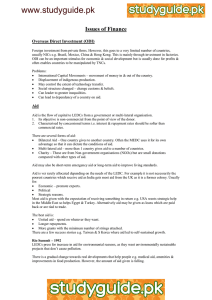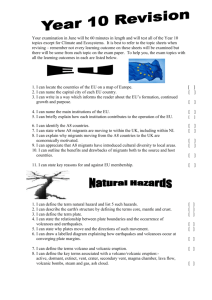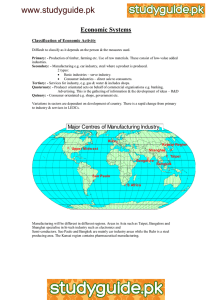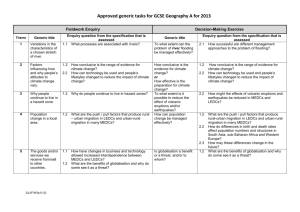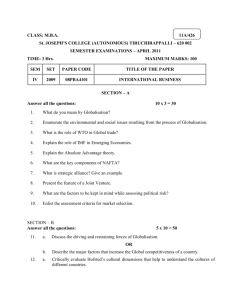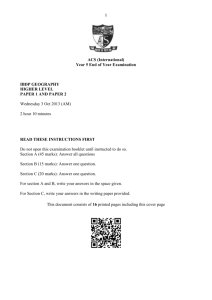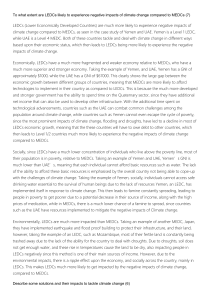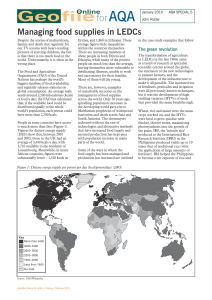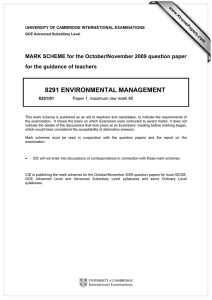www.studyguide.pk The globalisation of food production &
advertisement
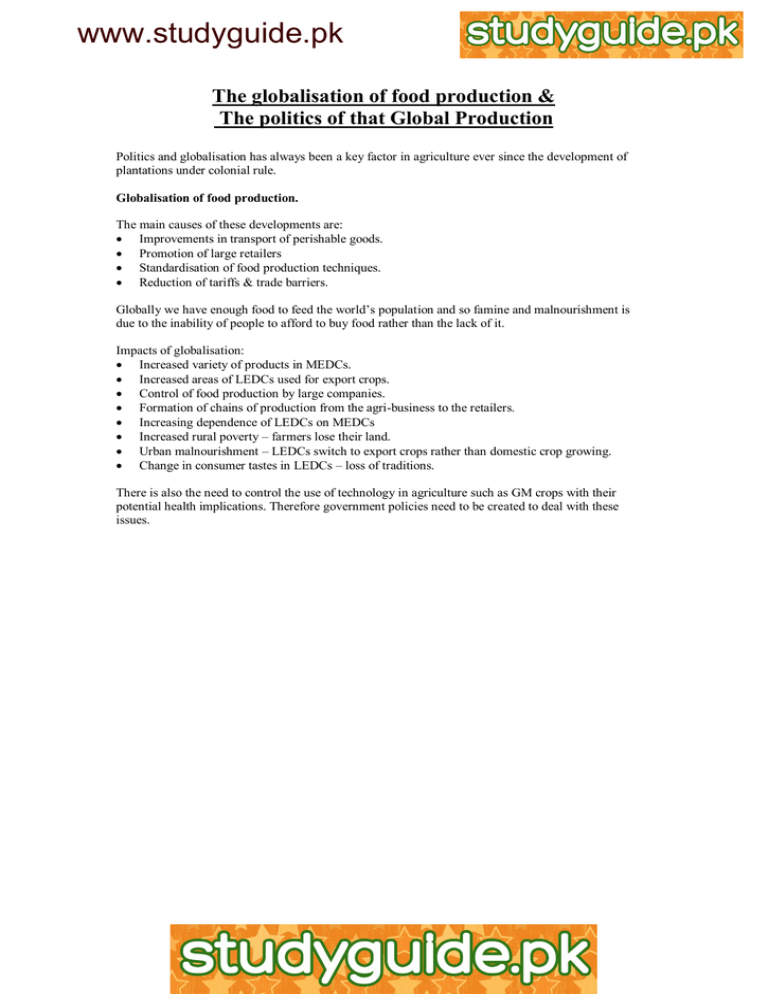
www.studyguide.pk The globalisation of food production & The politics of that Global Production Politics and globalisation has always been a key factor in agriculture ever since the development of plantations under colonial rule. Globalisation of food production. The main causes of these developments are: Improvements in transport of perishable goods. Promotion of large retailers Standardisation of food production techniques. Reduction of tariffs & trade barriers. Globally we have enough food to feed the world’s population and so famine and malnourishment is due to the inability of people to afford to buy food rather than the lack of it. Impacts of globalisation: Increased variety of products in MEDCs. Increased areas of LEDCs used for export crops. Control of food production by large companies. Formation of chains of production from the agri-business to the retailers. Increasing dependence of LEDCs on MEDCs Increased rural poverty – farmers lose their land. Urban malnourishment – LEDCs switch to export crops rather than domestic crop growing. Change in consumer tastes in LEDCs – loss of traditions. There is also the need to control the use of technology in agriculture such as GM crops with their potential health implications. Therefore government policies need to be created to deal with these issues. www.studyguide.pk Mezzogiorno, S Italy “Land of the noon day sun” S of Rome. Physical conditions: Rugged relief with mountains and bare rocky outcrops – only 15% lowland Thin, dry limestone soils – poor drainage Torrid summer heat & drought - <500mm rainfall leads to drought Problems: emigration of workers Lack of minerals & natural resources Lack of commerce & industry Lack of skilled labour Scrub land poor for goats/sheep. Small areas of fertile land so low yields. Soil erosion due to deforestation. Original Agricultural Use Only extensive agriculture was carried out on the potentially fertile coastal plains due to the fear of invasion and the system of land tenure. The plains contained large estates owned by absentee landlords called Latifundia. They only wanted the land for prestige and so there was a monoculture of wheat – good land was under-utilised On the slopes the poor had smallholdings (Minifundia) which was over-used leading to soil erosion. Agricultural reform – Cassa per il Mezzogiorno A development plan for land reform where 200,000ha land was taken away from the rich landowners & used by the poor. Infrastructure was put in place to modernise & increase output. There were new roads, villages, power & water supplies. Instead of wheat plots of oranges, fruits, salad vegetables & tomatoes were grown. However the scheme has generally been unsuccessful apart from a few largescale coastal areas. The upland subsistence farms still exist where there is a monoculture of low yielding wheat due to the poor soils. Most farmers can just about feed their families but there is no surplus for sale. Olives & vines are important as they tolerate the conditions well. There is also extensive areas left for sheep grazing. Problems remaining: Farming mainly by the elderly as no one wants to do it. Increased mechanisation – unemployment. Ground unstable – land slides & soil erosion. Mezzogiorno is a peripheral area so little help from CAP and a long way from markets.


